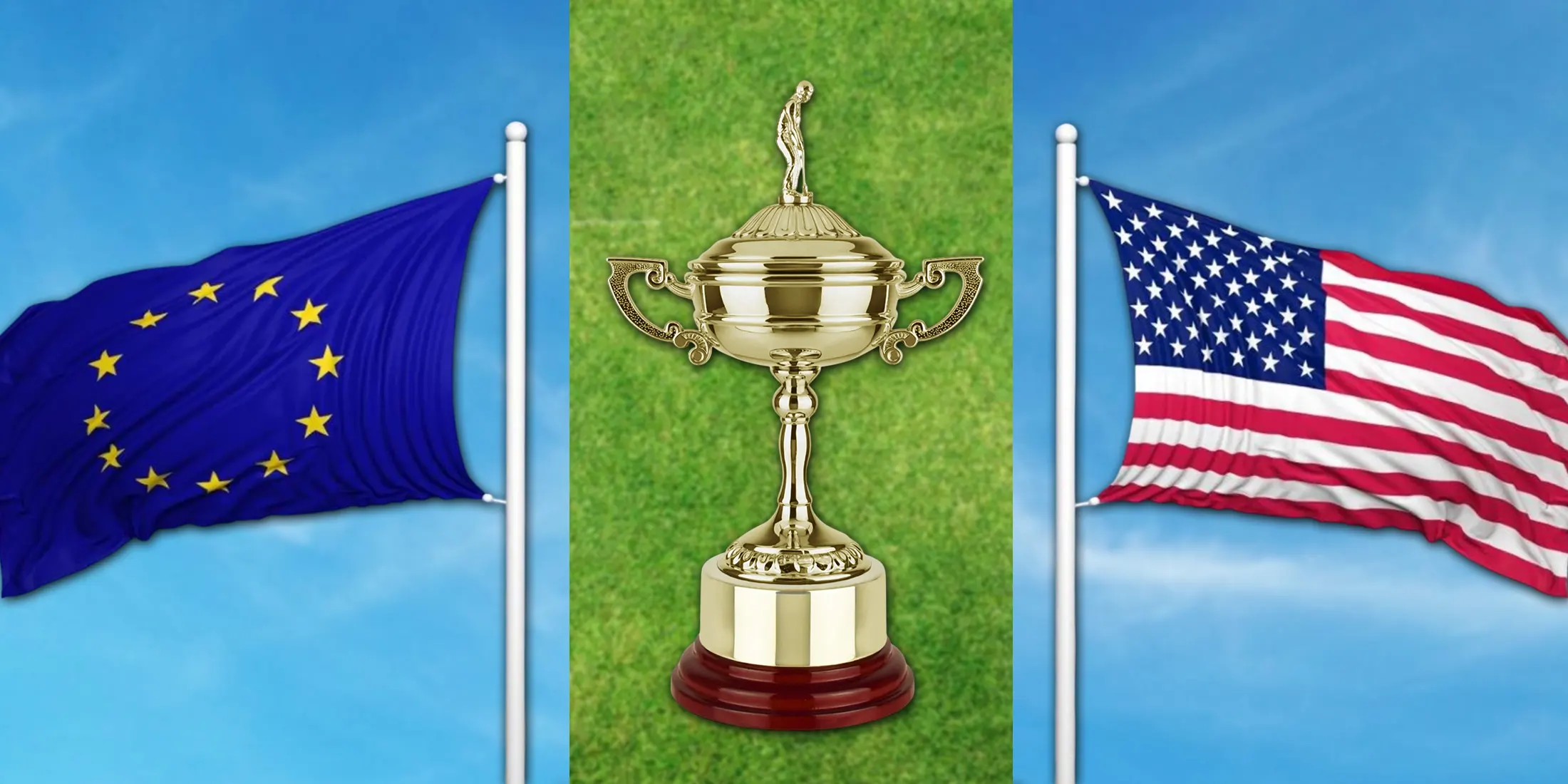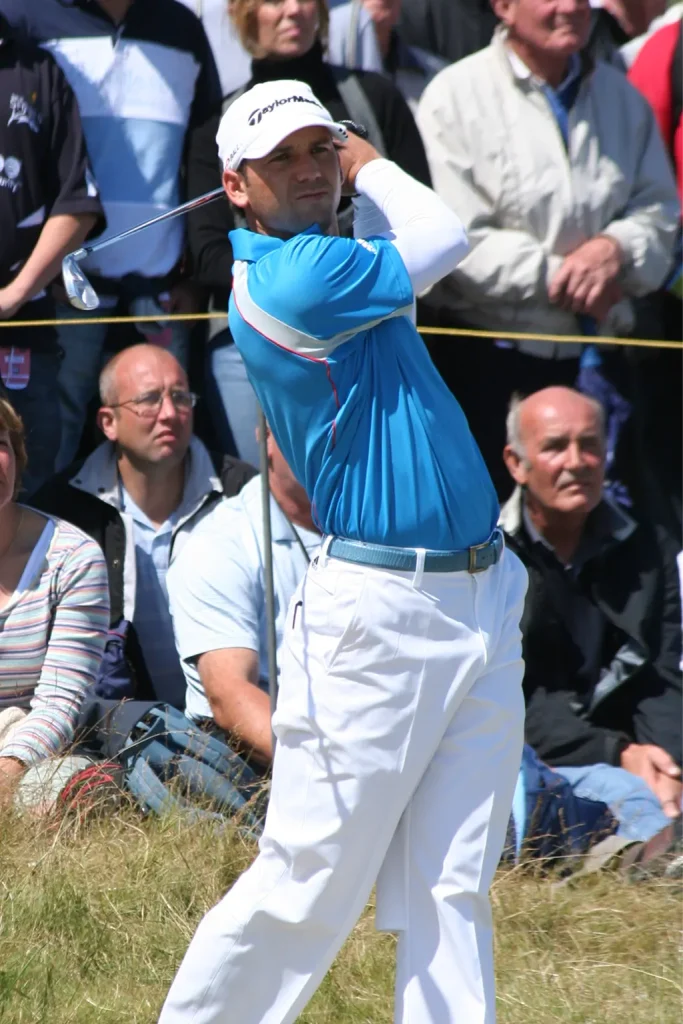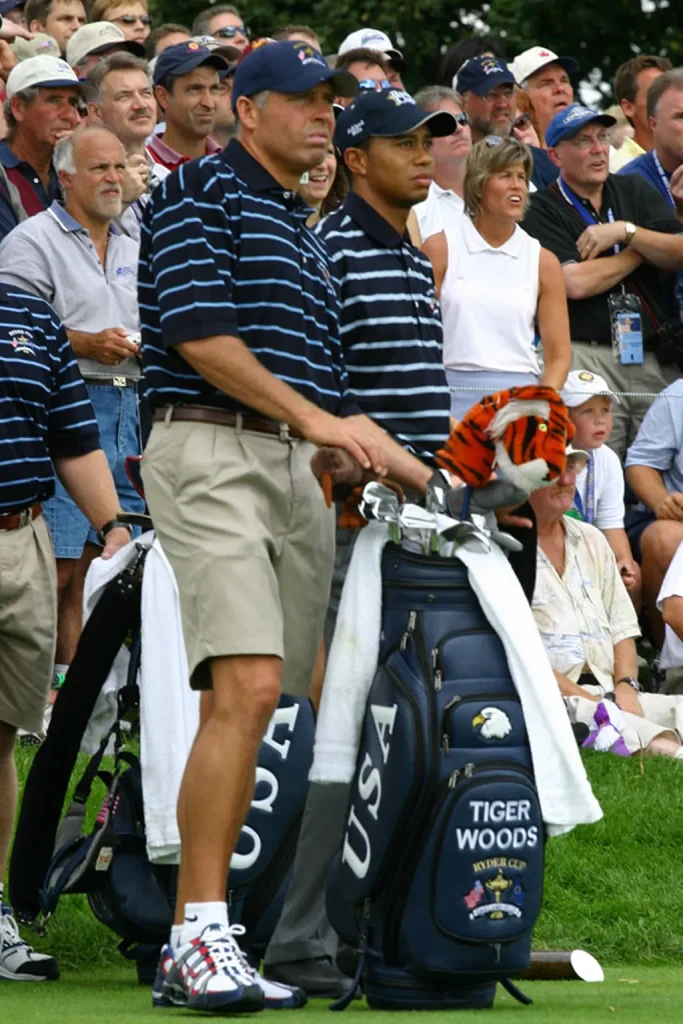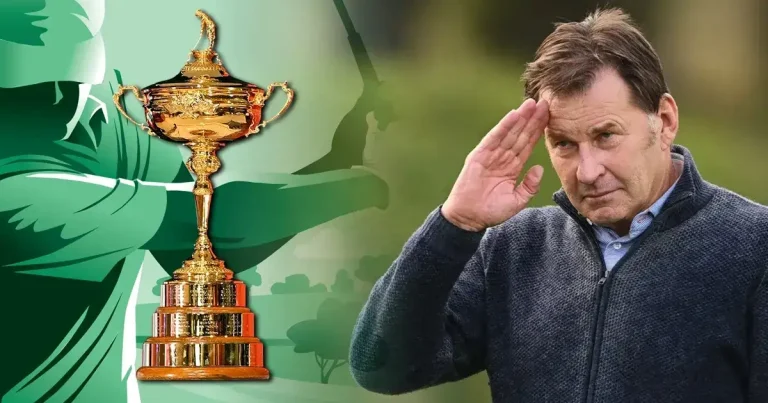Ryder Cup History, Records, Famous Victories, and Pairings Till 2025

The Ryder Cup is golf’s greatest team event. Every two years, the United States battles Europe in a match-play showdown filled with drama, pride, and history. From its start in the 1920s to today’s global spectacle, Ryder Cup history has been filled with unforgettable victories, remarkable records, and iconic pairings.
Ryder Cup History: How It Started
The Ryder Cup began in 1926 with an exhibition at Wentworth in England. Businessman Samuel Ryder loved the idea of U.S. vs. Britain and donated the golden trophy. The first official match came in 1927 at Worcester Country Club in Massachusetts. The U.S. won 9½–2½, and a tradition was born.

Evolution of the Ryder Cup
For decades, the U.S. dominated. Great Britain could rarely keep up, winning only three of the first 22 events. In 1979, the format expanded to include all of Europe. The change transformed the Ryder Cup. Stars like Seve Ballesteros, Nick Faldo, and Bernhard Langer gave Europe new strength and balance.
Other changes made the event what it is today:
- Matches stretched into three days with foursomes, four-ball, and singles.
- Crowds grew louder and more passionate.
- Television turned the Ryder Cup into a global sporting event.
Ryder Cup Qualifying and Captain’s Picks
Making a Ryder Cup team is a major honor. Players earn automatic spots through a points system based on majors and tour events. For Team USA, the PGA of America manages the qualification process, while for Team Europe, the European Tour oversees the points race.
We will also be covering the event in detail, so you can always check our news section for the latest Ryder Cup updates and analysis.
Each side also gets captain’s picks. These allow the captain to choose players who may not qualify on points but bring experience, momentum, or match-play skill.
Many Ryder Cup legends have been captain’s picks. Sometimes they rise as heroes. Other times they struggle, showing the gamble captains must take.
How Ryder Cup Match-Ups Are Decided
One of the most strategic parts of the Ryder Cup is how captains create their match-ups. Each day they submit lineups in secret, not knowing who the other side has chosen. Only when both lists are revealed do the pairings become official.
In the team sessions on Friday and Saturday, captains weigh chemistry and balance carefully. For alternate-shot play, they often pair a steady driver with a sharp putter. In the better-ball format, aggressive scorers who can make birdies are usually paired together.
On Sunday, all 12 players compete in singles matches. Captains decide the order strategically. Some lead with their stars to gain early momentum, while others place them in the middle to stop an opponent’s run.
This chess-like process of choosing pairings and orders adds another layer of drama to Ryder Cup history. The right match-up can spark a legendary win, while the wrong one can haunt a team for years.

Ryder Cup Formats of Play
The Ryder Cup uses three formats across its three days of competition. Each brings different skills, teamwork, and pressure into play.
- Foursomes (Alternate Shot)
Two-player teams compete using one ball. Teammates alternate shots until the hole is finished. This format demands accuracy and rhythm. It is played on Friday and Saturday, usually in one session each day. - Four-ball (Better Ball)
Both players in a team play their own ball. The best score on each hole counts. This encourages aggressive play since one partner can attack while the other plays safe. Like foursomes, four-ball is also played on Friday and Saturday, filling the other daily session. - Singles
On Sunday, all 12 players from each side compete in one-on-one matches. Each match is worth one point. This is often the most dramatic day, with momentum swinging quickly and the Cup often decided in the final matches.
In total, 28 points are available: 16 from team sessions and 12 from singles. The first team to 14½ points wins the Ryder Cup. If the score ends 14–14, the team already holding the Cup retains it.
Ryder Cup Captains, Vice-Captains, and Team Support
Captains and vice-captains are vital during matches. They travel the course in golf buggies, offering advice and boosting morale. Vice-captains often focus on specific groups, giving feedback to the captain and keeping players calm.
Team spirit is also lifted by family. Wives and girlfriends walk the fairways, cheer loudly, and celebrate victories. Their presence creates a family atmosphere that makes the Ryder Cup feel bigger than golf alone.
Ryder Cup Famous Victories
1987 – Muirfield Village
Europe shocked the U.S. with their first win on American soil. Tony Jacklin’s team proved Europe could match the Americans.
1991 – The “War on the Shore”
At Kiawah Island, tempers flared. The U.S. won by a single point after Bernhard Langer’s missed putt on the final green.
1997 – Valderrama, Spain
The Ryder Cup came to continental Europe for the first time. Seve Ballesteros captained Europe to a narrow 14½–13½ victory. The U.S. won the final-day singles 8–4, but Colin Montgomerie halved the last match with Scott Hoch to clinch the Cup. It was also Tiger Woods’ debut. He started with a win but finished 1–3–1. Since then, Europe has not lost at home — 28 years and counting.
2012 – The Miracle at Medinah
Europe trailed 10–6 entering Sunday. They roared back, winning 8½ of 12 singles. Inspired by Seve’s memory, Europe completed the greatest comeback in Ryder Cup history.
2016 – Hazeltine
Team USA, after three straight defeats, finally bounced back. Strong pairings and home support delivered a convincing win.
Controversial Moments in Ryder Cup History
The Ryder Cup has also seen heated debates, emotional clashes, and controversial incidents.
- 1991 – The “War on the Shore”
Kiawah Island was fiery on and off the course. Aggressive American celebrations and the tension surrounding Bernhard Langer’s final putt raised questions about sportsmanship. - 1999 – The Battle of Brookline
The U.S. staged a stunning comeback, but Justin Leonard’s long putt on 17 sparked chaos. American players, wives, and fans rushed the green before José María Olazábal putted. The U.S. won, but the scene remains one of the Ryder Cup’s most criticized moments. - 2004 – Woods and Mickelson Pairing
At Oakland Hills, captain Hal Sutton forced Tiger Woods and Phil Mickelson together. The decision backfired. They lost both matches, and critics still cite it as one of the worst captain’s calls in Ryder Cup history. - 2012 – Medinah Crowd Behavior
Europe’s comeback was legendary, but several players complained about abusive crowd behavior. It led to stricter crowd control at later Ryder Cups. - 2018 – Reed vs. Spieth Fallout
Jordan Spieth and Patrick Reed had been one of America’s best teams. But they were split in Paris. Reed later criticized the move publicly, exposing U.S. team chemistry issues.
These controversies show how much passion and pressure surround the Ryder Cup. They also remind us that this event is as emotional as it is competitive.
Ryder Cup Records: Wins and Losses
Most Wins
- Sergio García (Europe): 25 wins, most all-time; 28.5 total points.
- Nick Faldo (Europe): 23 wins in 46 matches.
- Lee Westwood (Europe): 21 wins, tied with Bernhard Langer.
- Arnold Palmer (USA): 22 wins, an American icon.
Most Losses
- Phil Mickelson (USA): 22 losses, most in Ryder Cup history.
- Jim Furyk (USA): 20 losses.
- Lee Westwood (Europe): 20 losses, most for Europe.
- Nick Faldo (Europe): 19 losses.
Ryder Cup Singles Records
Singles Sunday has produced legends and heartbreak.
- Colin Montgomerie (Europe): Undefeated, 6 wins and 2 halves.
- Nick Faldo, Ian Poulter, Lee Trevino: Six singles wins each, most all-time.
- Tiger Woods (USA): 4–2–2, strong in singles despite overall struggles.
- Phil Mickelson (USA): 5–6–1, inconsistent record.
- Lee Westwood (Europe): 4–7–0, often fell short.
Doubles Disappointments in Ryder Cup Pairings
Some of golf’s biggest names never clicked in pairs.
- Tiger Woods & Phil Mickelson: Paired in 2004, they lost both matches. The “super team” experiment became infamous.
- Tiger Woods with others: Woods never found a consistent winning partner.
- Phil Mickelson: His aggressive play style often clashed with partners.
- Jim Furyk: Despite steady tour play, he struggled badly in team formats.
- David Duval: A former No. 1, but 3–9–2 in Ryder Cups.
Legendary Ryder Cup Pairings
Some partnerships became icons:
- Seve Ballesteros & José María Olazábal (Europe): The “Spanish Armada,” with 11 wins.
- Ian Poulter & Rory McIlroy (Europe): A fiery duo, especially in 2012.
- Sergio García & Luke Donald (Europe): Consistent in foursomes.
- Patrick Reed & Jordan Spieth (USA): A fierce pair in 2014 and 2016.
- Arnold Palmer & Gardner Dickinson (USA): A classic American team.
Ryder Cup Struggles: When Greats Fell Short
The Ryder Cup humbles even legends.
- Tiger Woods: 13–21–3 overall, never dominant here.
- Phil Mickelson: 18–22–7, with 22 total losses.
- Jim Furyk: 10–20–4, one of the toughest U.S. records.
- David Duval: 3–9–2, far below expectations.
- Lee Westwood: 21 wins but also 20 losses.
- Nick Faldo: 25 points scored but 19 defeats as well.
Ryder Cup Winners by Year
The Ryder Cup has shifted back and forth between the United States and Europe. Here’s the full list of winners and scores since the first match in 1927:
| Year | Winner | Score |
|---|---|---|
| 2023 | Europe | 16.5–11.5 |
| 2021 | United States | 19–9 |
| 2018 | Europe | 17.5–10.5 |
| 2016 | United States | 17–11 |
| 2014 | Europe | 16.5–11.5 |
| 2012 | Europe | 14.5–13.5 |
| 2010 | Europe | 14.5–13.5 |
| 2008 | United States | 16.5–11.5 |
| 2006 | Europe | 18.5–9.5 |
| 2004 | Europe | 18.5–9.5 |
| 2002 | Europe | 15.5–12.5 |
| 1999 | United States | 14.5–13.5 |
| 1997 | Europe | 14.5–13.5 |
| 1995 | Europe | 14.5–13.5 |
| 1993 | United States | 15–13 |
| 1991 | United States | 14.5–13.5 |
| 1989 | Tied (Europe retains) | 14–14 |
| 1987 | Europe | 15–13 |
| 1985 | Europe | 16.5–11.5 |
| 1983 | United States | 14.5–13.5 |
| 1981 | United States | 18.5–9.5 |
| 1979 | United States | 17–11 |
| 1977 | United States | 12.5–7.5 |
| 1975 | United States | 21–11 |
| 1973 | United States | 19–13 |
| 1971 | United States | 18.5–13.5 |
| 1969 | Tied (U.S. retains) | 16–16 |
| 1967 | United States | 23.5–8.5 |
| 1965 | United States | 19.5–12.5 |
| 1963 | United States | 23–9 |
| 1961 | United States | 14.5–9.5 |
| 1959 | United States | 8.5–3.5 |
| 1957 | Great Britain | 7.5–4.5 |
| 1955 | United States | 8–4 |
| 1953 | United States | 6.5–5.5 |
| 1951 | United States | 9.5–2.5 |
| 1949 | United States | 7–5 |
| 1947 | United States | 11–1 |
| 1937 | United States | 8–4 |
| 1935 | United States | 9–3 |
| 1933 | Great Britain | 6.5–5.5 |
| 1931 | United States | 9–3 |
| 1929 | Great Britain | 7–5 |
| 1927 | United States | 9.5–2.5 |
The chart highlights clear shifts in Ryder Cup history. The United States dominated the early decades, winning almost every contest from 1927 through the 1970s. But since 1985, Europe has taken control, winning 12 of the last 18 editions. The modern Ryder Cup is no longer one-sided—it is one of the most competitive and emotional battles in all of sport.
Why the Ryder Cup Endures
The Ryder Cup is more than a tournament. It is a battle of pride, strategy, and nerve. Every shot can shift momentum. Every pairing tells a story.
From Ryder Cup history in 1927 to famous victories at Kiawah, Medinah, and Valderrama, the event continues to inspire fans worldwide. Over the decades, Ryder Cup history has shown how rivalries, comebacks, and legendary pairings define the spirit of this competition. With Europe defending a home streak that stretches back to 1997 and the U.S. hungry for redemption, the Ryder Cup remains a tradition unlike any other in golf.






